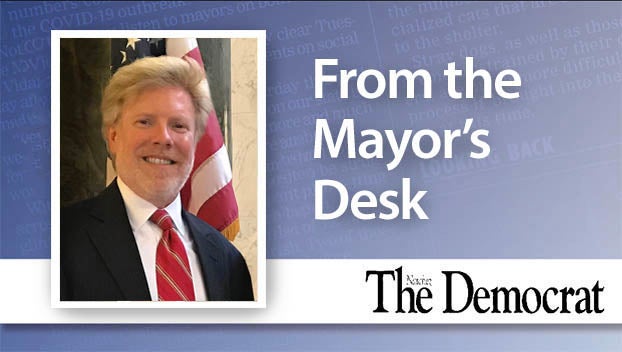Lessons from Weimar: Part 3
Published 12:00 am Sunday, July 16, 2017
To understand how Nazism succeeded, we need to understand what Nazism was. Most basically, it was the German form of fascism, a broader movement that began in Italy in 1919 and flourished in the interwar period. So, then, what was fascism? That’s not an easy question to answer. Some have defined it as capitalist and some as socialist. But, the first thing to understand is that fascism was a thing unto itself. A “third way,” as fascists themselves expressed it, not exactly Rightist or Leftist. Its policies straddled the divide. Fascist leaders were always outsiders who broke the usual rules, which, in a time of crisis when the old dogmas didn’t appear to be working, was part of their attraction.
One fascist doctrine is indisputable, though — ultra-nationalism. The “nation” as fascists conceived it, was defined by ethnicity rather than jointly held values. However, with Nazism, ethnicity was warped into a fable of “Aryan” racial supremacy. Nevertheless, there is general agreement among scholars about all fascists’ “mobilizing passions.”
Here’s a sampling, based on The Anatomy of Fascism by Columbia’s Robert Paxton. For their ethno-racial nation, they were consumed with “a sense of overwhelming crisis” and “dread of decline.” Paranoia was their oxygen; they drew fervor from their “conspiratorial view of history as a battle between the good and evil camps.” Fascists positively craved enemies, whether real or imagined, internal or external. Shared hatreds rather than shared principles were often the glue binding together followers from across regions and economic classes.
Accordingly, this national decline was blamed on the treachery of ethnic minorities at home, and/or “alien influences” from abroad. The restoration of the nation’s glory, therefore, required “internal cleansing, by exclusionary violence if necessary,” to be achieved “at whatever cost to free institutions and the rule of law.”
In this “Darwinian struggle” for survival, the only virtue was victory, violence the preferred means, disability a failing to be mocked. “Close your hearts to pity. The stronger man is right,” advised Hitler. As the personification of this “macho restoration of a threatened patriarchy,” the necessarily male “Leader” (il Duce in Italian, der Führer in German) alone “incarnated the group’s historical destiny.” It was his native instincts, not intellect or experience, that made him fit to lead the nation as an unchecked dictator.
Unlike traditional authoritarianism, fascism appealed for mass support, and did so with propaganda that was openly deceitful, but emotionally rousing. Historian Modris Eksteins summed up Nazism’s populist allure, “It was not the substance…it was the style and the mood. It was above all the theater, the vulgar ‘art,” with “the flags, the insignia, the uniforms, the pageantry, the endless repetition of slogans. Nazism was a cult. Nazism was not a party; Nazism was an event.” It was a secular, holy-rolling-snake-handling-goose-stepping tent revival with Brother Adolf himself transported by the spirit and speaking in tongues — as long as the tongues were non-Semitic, that is. One critic called fascism “a government by braying asses.” Perhaps so, but for millions the braying sounded like an aria of communal belonging.
But, all in the past, correct? Some scholars do argue that fascism was unique to its era, literally dying in 1945. However, fascism’s swarm of “passions” are well-adapted to prey on the anxieties of our times. Its propagandistic use of ethno-racial identity politics, of paranoia, and its fawning over Leaders as charismatic “stars” could work extraordinarily well in this age of social media. A “Twitler” app, maybe? The lesson? Hitler and Mussolini were, but fascism is.
Next time, if fascists weren’t conservatives, what was their relationship to conservatism?
Jim Wiggins is a retired Copiah-Lincoln Community College history instructor. He is writing a bi-weekly column about history.






